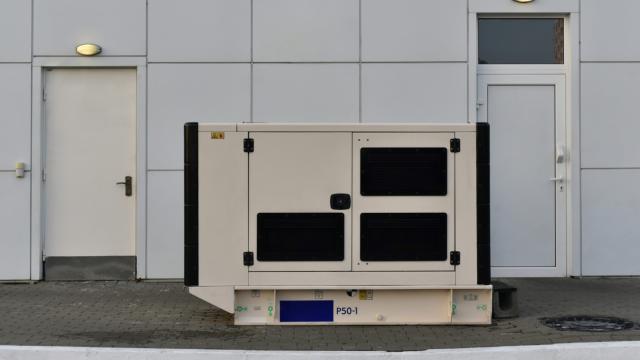Your electric service is very reliable, but outages do happen, and they can be costly in terms of lost revenue, reduced productivity and dissatisfied customers. Are you ready for the next outage? Although installing and maintaining standby power can be costly, it can really pay off in the case of an outage. Choosing the right size and type of backup power depends on your facility, equipment and business needs.
Fuel Source and Type
Generators are typically fueled by diesel or natural gas. Each has its advantages and disadvantages. Diesel often has a lower upfront cost, but you'll have a fuel tank that must be refilled and maintained and is protected from water infiltration due to bad weather.
Natural gas units may cost more to install, but they are cleaner-burning and more convenient from a maintenance standpoint. Conventional technologies, such as reciprocating engines and turbines, are most commonly used. Newer technologies, such as microturbines and fuel cells, are gaining in popularity.
Determine the Correct Size
What do you need to keep your business operating? Essential systems may include lighting, space conditioning, service and office or processing equipment. Some of these systems may need to operate continuously, while others may only be needed during business hours.
Consider peak power surges, as well as single-phase loads and load imbalance. Don't forget nonlinear loads, such as battery chargers and uninterruptible power supplies (UPS).
Your generator will require a manual or automatic transfer switch to disconnect from the power grid when the generator is supplying power to the load. Consult with a qualified electrician or engineer to size and design a backup power system that meets your needs.
Calculating the Costs
Does your business need standby generation? The answer may partly depend on the cost of an outage. Although the future is hard to predict, you can get a good idea of the potential cost to your operations by nailing down a few expenses:
Lost revenue. Estimate the hourly lost income to your business by taking your annual revenue and dividing it by the number of days and hours you are in operation each year.
Lost productivity. Your employees need to be paid, but they're often less productive or not able to produce at all during an outage. Take your annual payroll, divide it by the number of workdays and hours that you're in operation and you'll get an idea of how much an outage can cost you in wasted overhead.
Restoration expenses. Backup generation is critical for restaurants and grocery stores because their inventory is perishable. Operations that are heavily dependent on communications equipment, database servers and retail point of sales systems are also good candidates.
Often, the financial hardship of a power outage is not fully understood until afterwards. Take a hard look at your business operations and assess what the financial impact of a long-term power loss would be, and compare that to the cost of leasing or owning a standby generation system.
September 2022 Connections Newsletter
From industry trends and best practices to sustainability initiatives, our monthly Connections Newsletter provides valuable insights, updates, and resources to support our large business customers.
